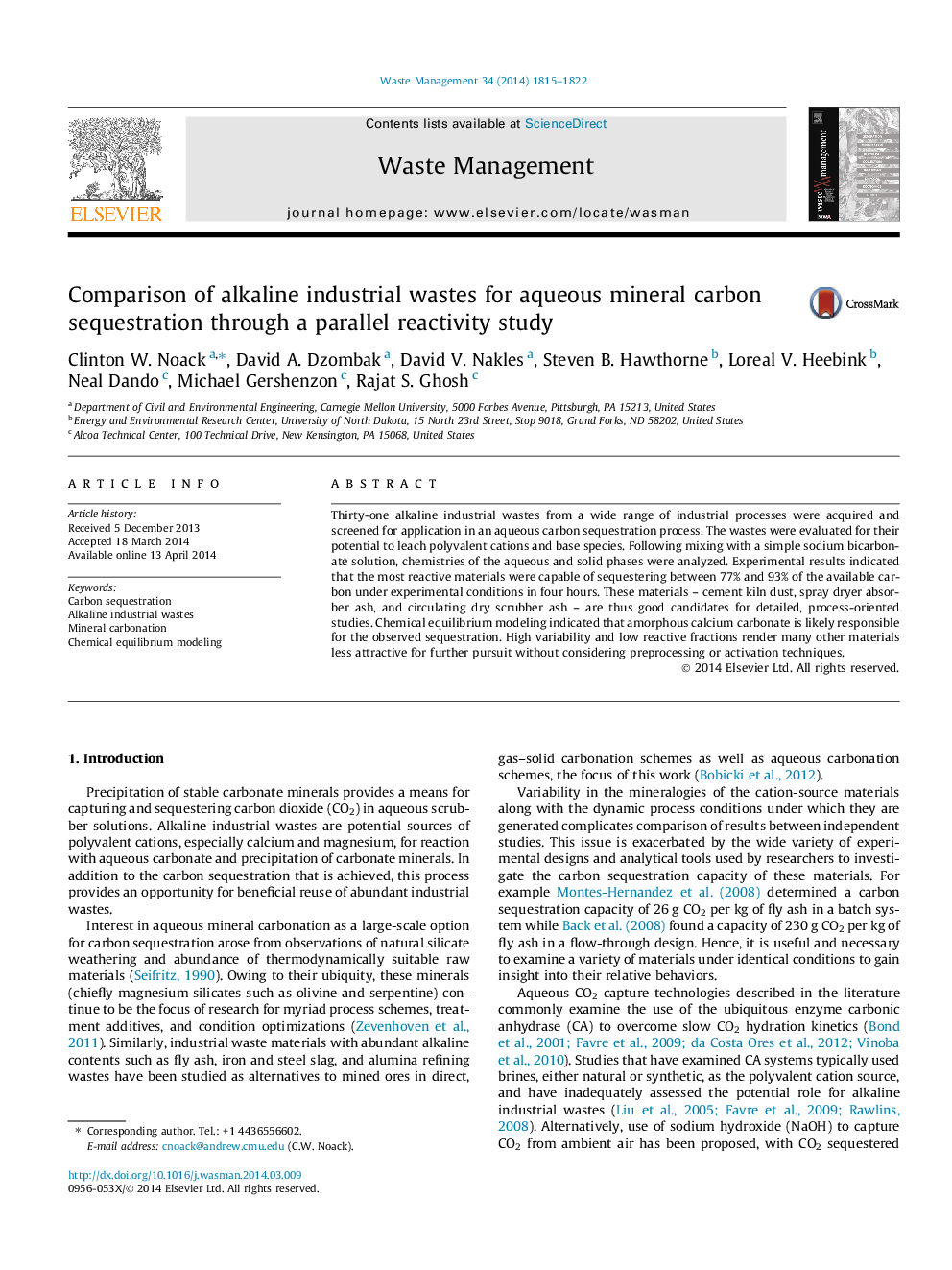| Article ID | Journal | Published Year | Pages | File Type |
|---|---|---|---|---|
| 4471523 | Waste Management | 2014 | 8 Pages |
•Alkaline industrial waste carbonation studies vary widely in experimental design.•Uniform experimental conditions allowed direct comparison of heterogeneous materials.•Compared 31 total samples from 7 material classes for carbonate reactivity.•Most reactive materials sequestered 77–93% of available carbonate in 4 h.•Optimal materials were cement kiln dusts and dry desulfurization solids.
Thirty-one alkaline industrial wastes from a wide range of industrial processes were acquired and screened for application in an aqueous carbon sequestration process. The wastes were evaluated for their potential to leach polyvalent cations and base species. Following mixing with a simple sodium bicarbonate solution, chemistries of the aqueous and solid phases were analyzed. Experimental results indicated that the most reactive materials were capable of sequestering between 77% and 93% of the available carbon under experimental conditions in four hours. These materials – cement kiln dust, spray dryer absorber ash, and circulating dry scrubber ash – are thus good candidates for detailed, process-oriented studies. Chemical equilibrium modeling indicated that amorphous calcium carbonate is likely responsible for the observed sequestration. High variability and low reactive fractions render many other materials less attractive for further pursuit without considering preprocessing or activation techniques.
